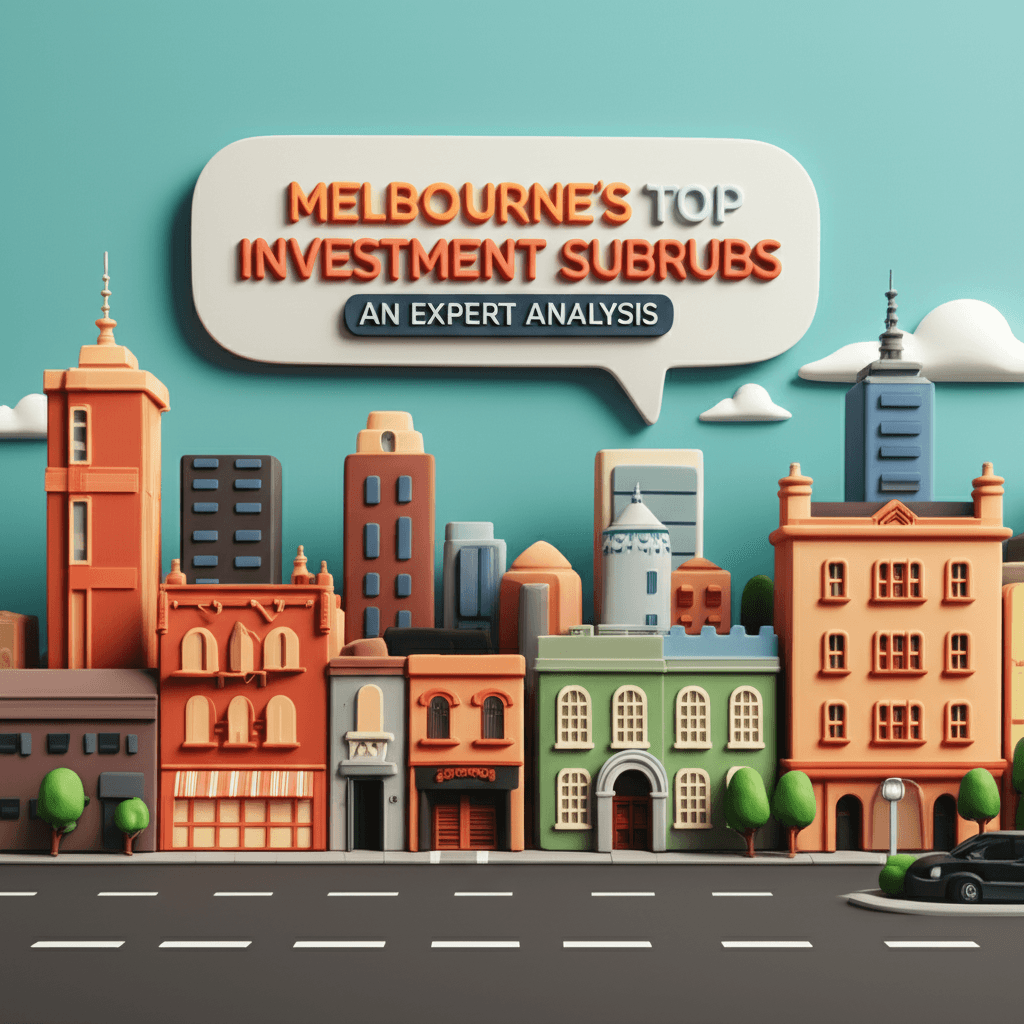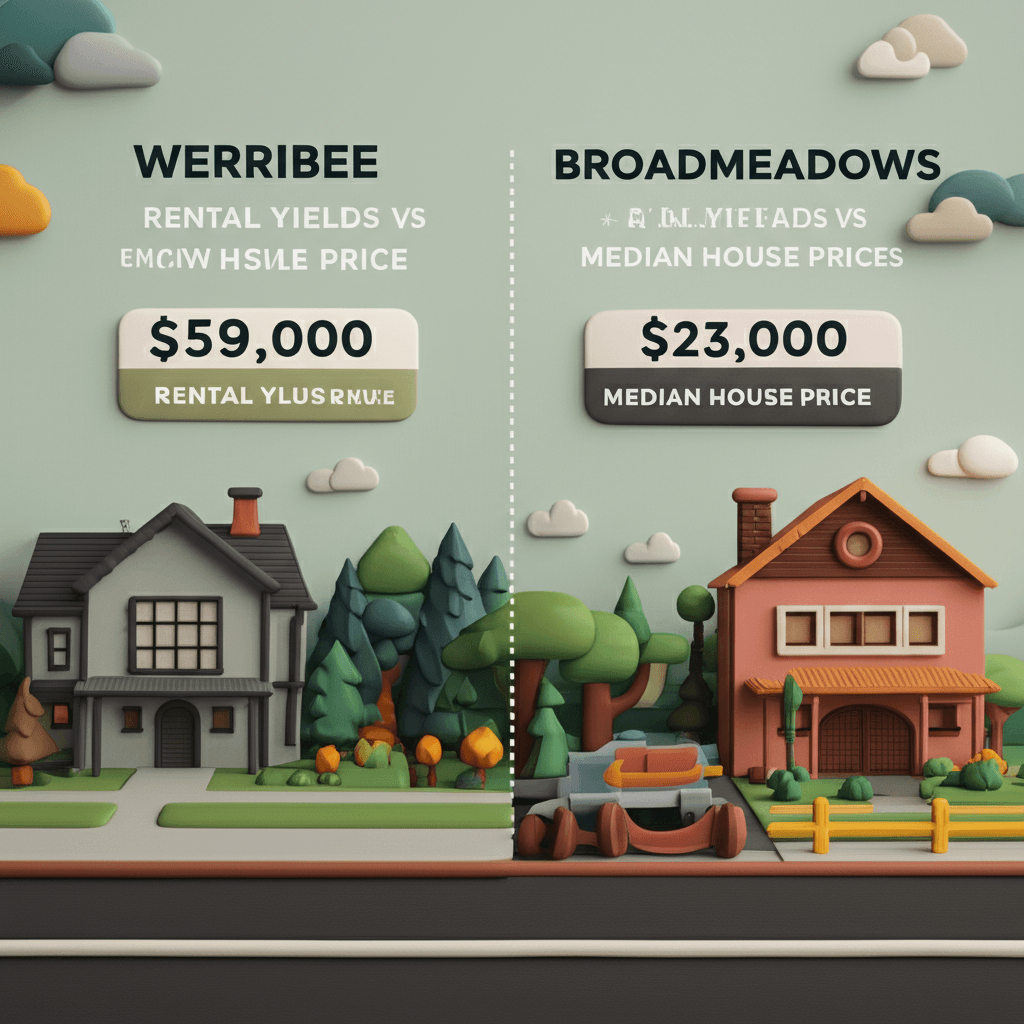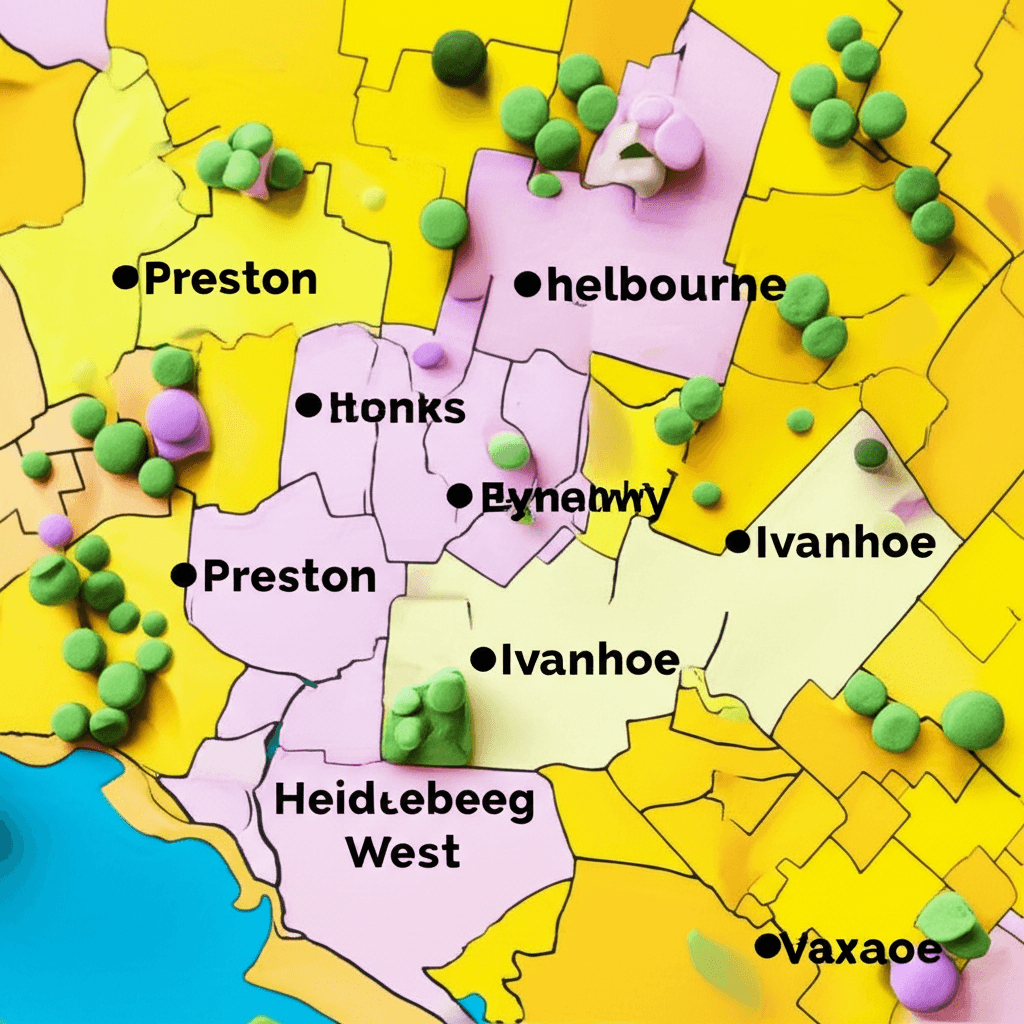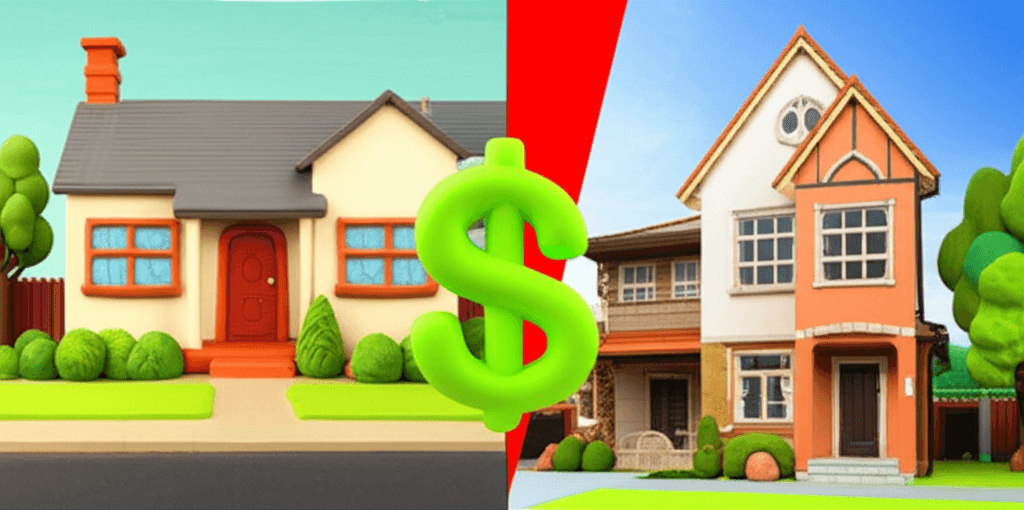Melbourne's Top Investment Suburbs for 2025: An Expert Analysis
Discover high-growth and high-yield suburbs across different price points, from under $800k to over $1 million, with insights from property expert Steve Ash.

Melbourne: The Sleeping Giant of Australian Property
Is Melbourne the sleeping giant of the Australian property market? With a staggering 41% price disparity between houses in Sydney and Melbourne—the widest gap in over 20 years—the value proposition is undeniable. While factors like tenancy laws and land tax rules have created investor hesitancy, they've also opened a window for savvy buyers to acquire property with significant long-term potential. This guide, based on analysis from investment expert Steve Ash, unpacks the top suburbs to watch in 2025, categorised by investment strategy.
High-Yield Plays: Under $800,000
For investors prioritising strong cash flow to offset holding costs, Melbourne offers several compelling options. These suburbs are selected for their robust rental yields (strong for the Melbourne market), tightening vacancy rates, and affordable entry points, making them ideal for building a resilient portfolio. By using data analytics tools, investors can identify areas where rental demand is outpacing price growth, creating a positive cash flow environment.

Werribee
Located 29km west of the CBD, Werribee is emerging as a standout for its value and growth drivers. It offers a balanced lifestyle with crucial infrastructure upgrades and excellent transport links, including a fast train to the city.
Median House Price: ~$650,000
Gross Rental Yield: ~3.94%
Vacancy Rate: 2.15% (trending down)
Owner-Occupier Ratio: 64%
12-Month Rental Growth: 17.5%
12-Month Capital Growth: 1.72%
Why it's on the list: Werribee's appeal is bolstered by significant local investment, including hospital and zoo upgrades. The combination of minimal price growth and explosive rental growth is correcting yields upwards. Its strategic position offers access to both Melbourne and Geelong, and older properties on decent land blocks present development potential.
Broadmeadows
Just 16km northwest of the city, Broadmeadows is a divisive but data-backed hotspot. Its proximity to the CBD and extremely tight rental market make it a compelling choice for investors who can see past its historical reputation.
Median House Price: ~$570,000
Gross Rental Yield: ~4.29%
Vacancy Rate: 0.84%
Owner-Occupier Ratio: 47%
12-Month Rental Growth: 23.6%
12-Month Capital Growth: 3.64%
Why it's on the list: The numbers speak for themselves. An incredibly low vacancy rate and phenomenal rental growth make Broadmeadows a cash flow powerhouse. While the owner-occupier ratio is lower, its affordability, proximity to the city, and generous zoning for subdivision and development create enormous value-add potential.
Capital Growth Plays: $800,000+
For investors with a longer-term horizon, targeting capital growth is key. These suburbs are chosen for their 'ripple effect' potential, sandwiched between blue-chip areas with much higher median prices. The strategy here is to buy in an undervalued pocket and hold as gentrification and market forces close the price gap over time. Using an AI-powered property search can help pinpoint these specific pockets of value.
Heidelberg West
Situated 12km northeast of the CBD, Heidelberg West is an undervalued gem surrounded by premium suburbs like Preston ($1.1M median) and Ivanhoe ($1.6M median). This price disparity presents a clear opportunity for future growth.
Median House Price: ~$750,000
Gross Rental Yield: ~3.62%
Vacancy Rate: 1.99%
Owner-Occupier Ratio: 42%
12-Month Rental Growth: 25.7%
12-Month Capital Growth: 1.74%
Why it's on the list: Heidelberg West is a classic gentrification play. Despite modest capital growth recently, its rental market is on fire, with over 25% growth in the last year, making it easier to hold. The suburb benefits from residential growth zoning, offering opportunities for investors to find the 'worst house on the best street' and capitalise on the area's inevitable uplift.

Reservoir
Another large suburb 12km from the city, Reservoir has been slowly gentrifying for years. It features a mix of desirable pockets, particularly those bordering Preston, and offers solid infrastructure, including La Trobe University and Northland Shopping Centre.
Median House Price: ~$890,000
Gross Rental Yield: ~3.11%
Vacancy Rate: 1.31%
Owner-Occupier Ratio: N/A
12-Month Rental Growth: 14%
12-Month Capital Growth: 3.8%
Why it's on the list: Reservoir has shown the strongest capital growth on this list so far, suggesting its value is already being recognised. Its proximity to the city, good schools, shopping centres, and the university (which drives rental demand from international students) create a solid foundation for long-term appreciation. Like other growth suburbs, it offers good zoning and value-add potential on large blocks.
Value-Add Opportunities: $1 Million+
This strategy is for investors looking to actively manufacture equity. These suburbs have a significant price gap between unrenovated and renovated properties or between different property configurations (e.g., 3-bedroom vs. 4-bedroom). The goal is to buy an asset with good bones, invest in strategic upgrades, and realise an immediate uplift in value. An AI Buyer's Agent can help identify properties with the highest potential for this kind of transformation.
Chelsea
This Bayside suburb, 30km southeast of the CBD, offers a desirable beachside lifestyle. While its capital growth has recently dipped, this presents a prime buying opportunity, especially for renovators.
Median House Price: ~$1,000,000
Gross Rental Yield: ~3.29%
Vacancy Rate: 1.05%
Owner-Occupier Ratio: 61%
12-Month Rental Growth: 12.48%
12-Month Capital Growth: -5.0%
Why it's on the list: The key here is the market discrepancy. The median price for a 3-bedroom house is around $950k, while the median for a 4-bedroom house jumps to $1.5 million. Finding a property where a fourth bedroom can be added through a simple conversion (e.g., of a rumpus room or large laundry) can unlock hundreds of thousands of dollars in equity. Buying when prices are temporarily down is a classic 'be greedy when others are fearful' strategy.

Footscray
Incredibly close to the CBD at just 6km west, Footscray’s value proposition is phenomenal. It has long been considered undervalued compared to suburbs an equal distance to the east, but major infrastructure projects are set to change that.
Median House Price: ~$950,000
Gross Rental Yield: ~3.21%
Vacancy Rate: 2.92% (Note: data skewed by high unit supply)
Owner-Occupier Ratio: N/A
12-Month Rental Growth: 9.42%
12-Month Capital Growth: 7.12%
Why it's on the list: It's a no-brainer from a proximity and value standpoint. With significant infrastructure investment, including station upgrades and the new airport rail line, Footscray is primed for growth. It also shares the same value-add potential as Chelsea, with a large price gap between 3-bed and 4-bed homes, offering a clear path to manufacturing equity close to the city.
A Suburb to Reconsider: Werribee South
While finding a true 'no-go' area in a market with such broad potential is difficult, it's crucial to identify areas where the deck is stacked against investors. Werribee South serves as a cautionary tale. Despite being next to promising Werribee, its median house price is over $200,000 higher, sitting at ~$857,000. This is largely driven by new house-and-land packages on smaller blocks. The ongoing supply of new developments in the surrounding greenfield sites is likely to suppress long-term capital growth compared to established areas with land scarcity.
Conclusion
The Melbourne property market in 2025 is ripe with opportunity for investors who know where to look. Whether your strategy is focused on high rental yields in suburbs like Werribee and Broadmeadows, long-term capital growth in undervalued pockets like Heidelberg West and Reservoir, or manufacturing equity in Chelsea and Footscray, the key is a data-driven approach. By understanding the fundamentals of supply, demand, and local infrastructure, you can make informed decisions that build wealth for the long term.
Ready to uncover your own high-potential Melbourne property? Dive deeper with HouseSeeker's advanced real estate analytics to compare suburbs, track market trends, and make your next investment your best one yet.
Frequently Asked Questions
Why is Melbourne considered a 'sleeping giant' for property investment?
Melbourne is considered a sleeping giant because its property prices have been relatively flat compared to other major cities like Sydney, Brisbane, and Perth. The current price gap between Melbourne and Sydney is the largest it's been in over 20 years, suggesting the market is undervalued and has significant room for growth as it reverts to the mean.
What's more important for a Melbourne investment: rental yield or capital growth?
This depends entirely on your personal investment strategy and financial situation. If you need positive cash flow to support your portfolio, then a higher rental yield (found in suburbs like Broadmeadows) is more important. If you have a longer time horizon and can comfortably cover any holding costs, then targeting areas with high capital growth potential (like Heidelberg West) will likely build more wealth over time.
How can I identify a good value-add property?
Look for discrepancies in the market data. A key indicator, as seen in Chelsea and Footscray, is a large median price difference between 3-bedroom and 4-bedroom homes. This suggests strong demand for larger family homes. You can then search for 3-bedroom properties on decent-sized blocks with a floor plan that could be easily and cost-effectively converted to add another bedroom and bathroom, unlocking instant equity.
